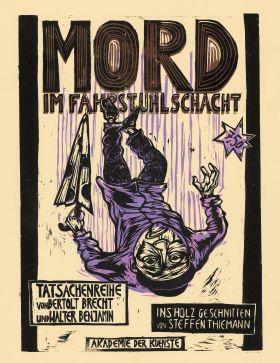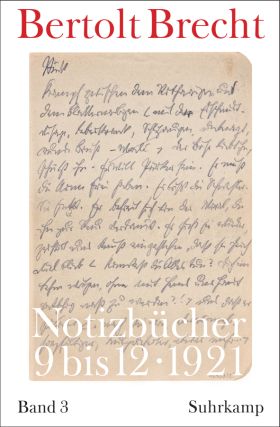Publications

Benjamin und Brecht.
Denken in Extremen
[Thinking in Extremes]
Erdmut Wizisla on behalf of the Akademie der Künste (ed.)
Akademie der Künste / Suhrkamp, Berlin 2017
German, 284 pp., 122 ill.
ISBN 978-3-518-42083-6
Best.-Nr. 4032
€ 32
Communication between the well-known Svendborg chess partners recalls the royal game: It employed tiring tactics, surprise attacks, retreat, strategic partnership, checkmate – and a new game. The essays and artistic commentary in the book turn the spotlight on an extraordinary constellation, in which Benjamin and Brecht appear as contemporaries in a century of extremes. They developed models for art, for politics, thought processes and for life itself; sometimes "extreme on a trial basis" and sometimes playful. With texts by Minou Arjomand, Broomberg & Chanarin, Zoe Beloff, Durs Grünbein, Barbara Hahn, Alexander Kluge, Mark Lammert, Bernd-Peter Lange, Burkhardt Lindner, Thomas Martin, Ursula Marx, Frank-M. Raddatz, Jan Philipp Reemtsma, Kristin Schulz, Marcus Steinweg, Steffen Thiemann, B. K. Tragelehn, Edmund de Waal and Erdmut Wizisla.

Mord im Fahrstuhlschacht
Tatsachenreihe by Bertolt Brecht and Walter Benjamin
Woodcuts by Steffen Thiemann
Graphic Novel
Akademie der Künste, Berlin 2017
German, 36 pp., 33 ill.
ISBN 978-3-88331-223-1
Best.-Nr. 4033
€ 7,50
Benjamin and Brecht decided to write a crime novel in autumn 1933. Steffen Thiemann has turned Brecht’s plot into woodcuts and set down Benjamin’s ideas as footnotes. It’s a story about blackmail that ends fatally. With texts by Steffen Thiemann and Erdmut Wizisla.

Bertolt Brecht, Notizbücher, Band 3: 1921
Martin Kölbel and Peter Villwock on behalf of the Akademie der Künste (eds.)
Akademie der Künste / Suhrkamp, Berlin 2017
German, 706 pp., 268 ill.
ISBN 978-3-518-42596-1
€ 58
Volume 3 of this notebook edition faithfully publishes four notebooks from 1921 for the first time. The focus is on Brecht’s third major work for the theatre, Im Dickicht (In the Jungle). In addition, numerous unknown drafts, notes about readings and private debates can also be found. The editors expand on Brecht’s entries in detailed text commentaries, while providing new knowledge about his work and biography.